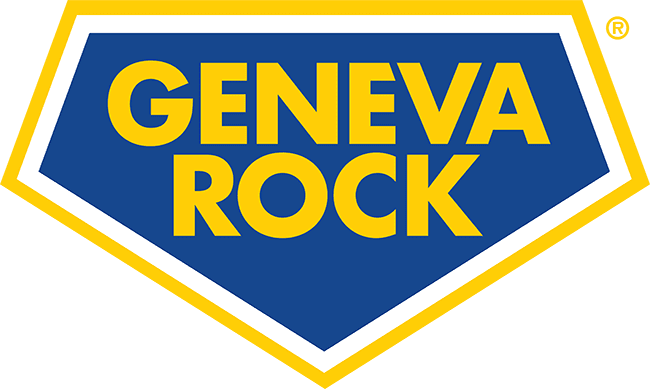Geneva Rock is making significant strides in the evolving landscape of asphalt technology. In partnership with the Utah Department of Transportation (UDOT), we recently embarked on an important project near Dugway, Utah, transforming the durability of State Route 196 with a groundbreaking high modification asphalt mix.
“The goal was to utilize a relatively new asphalt mixture that promised enhanced longevity,” says Reed Ryan, Executive Director of the Utah Asphalt Pavement Association. “The novel mixture boasted a higher modified oil content. The enhanced density and durability contribute to the road surface’s improved resistance against wear and tear.”
Howard Anderson, the state asphalt engineer for UDOT, tested the mixture extensively before it made its mark on a state road.
“It was applied in the worst possible conditions to gauge its durability and performance,” Reed reveals. “The mixture showcased its resilience, outperforming expectations even in challenging environments.”
This promising performance led to UDOT’s decision to apply the hi-mod asphalt directly on top of aged concrete on Interstate 15 last year, a move that not only proved successful but also opened the doors to exploring this innovative mixture in future projects, including the ongoing partnership with Geneva Rock.
On the technical front, the intricate application process required other techniques not commonly used in asphalt paving to ensure its success.
“We employed a thermal imaging camera on the asphalt paver, an innovation that allowed real-time monitoring of temperature inconsistencies and enabled optimal quality control,” says Jesse Averett, Asphalt Production Manager at Geneva Rock.
The intricacies of the new hi-mod asphalt demanded an elevated compaction effort and a meticulous approach to data gathering. To assist with the thermal mapping, Geneva Rock utilized the talents of Lance Greer, Area Manager of Construction Technology.
“We leveraged existing technologies and introduced new ones,” says Lance. “It’s a process that was developed by the Federal Highway Administration. I directly collaborated with the software’s programmers and leaders, addressing the unique challenges presented by the Utah landscape upfront.”
The ultimate goal was to find a way to eliminate the need for asphalt coring, a process that historically has led to countless potholes and cracks further down the life of the road.
“The roller mapping employed a pass count system,” says Jesse. “It worked in tandem with the heat map to provide real-time data on the number of passes and the location of the rollers, offering an unprecedented level of detail and insight into the paving process.”
However, like any innovative endeavor, the project faced challenges leading up to the successful collaboration with Geneva Rock.
“The same asphalt mix was used on two projects prior to the one near Dugway,” says Reed. “The initial attempts weren’t quite successful; we discovered that placing the temperature gauge on top of the roller was problematic due to the water used in compaction affecting the readings.”
This learning curve, paired with extraordinary collaboration with UDOT, was instrumental in refining the application process.
“UDOT has big plans for this asphalt mixture,” Reed continues. “There are ongoing test projects to keep evaluating the mixture’s application over cracked and aged concrete pavement. Asphalt’s recyclability is a significant advantage, making it an attractive option for such applications.”
The new mix’s benefits include cost-efficiency, an aspect that signals savings for taxpayers. Savings can also be made if the mix is able to be used on bridges, which have historically faced challenging and often dangerous conditions during the winter months.
Ultimately, the project was as much about data as it was about application. Geneva Rock found a way to “Build Better”—which was more than just a tagline in this project, it was reality.
“We were venturing into the unknown with the hi-mod mix,” says Jesse. “Gathering real-time data on the number of passes and the location of the rollers offered unprecedented insights into the paving process. These insights are not just pivotal for this project but will also inform our approach in future bids.”
With UDOT pleased with the outcome, Lance knows that the future is now. Moving forward, look for these techniques to continue to be used on Geneva Rock projects.
“We’re in the process of refining specifications to integrate improvements into our official protocols,” says Lance. “I’m grateful to have been part of such an important project here at Geneva Rock.”
As crews continue to redefine road durability, the collaborative spirit between Geneva Rock and UDOT is set to pave the path for a future where roads are not just built to last but are also emblematic of technological and environmental advancement. It’s another way Geneva Rock is doing its part in Building a Better Community.
